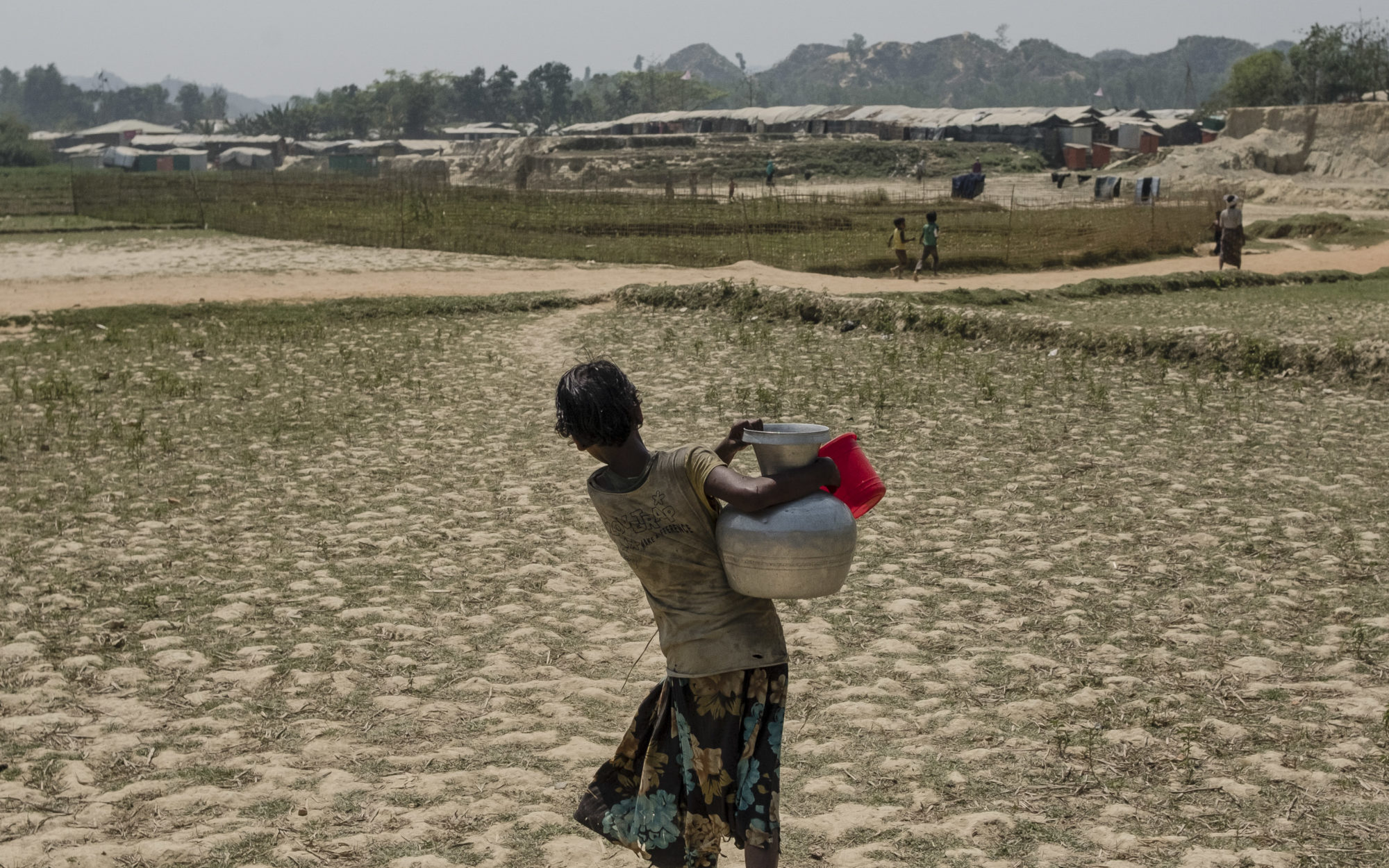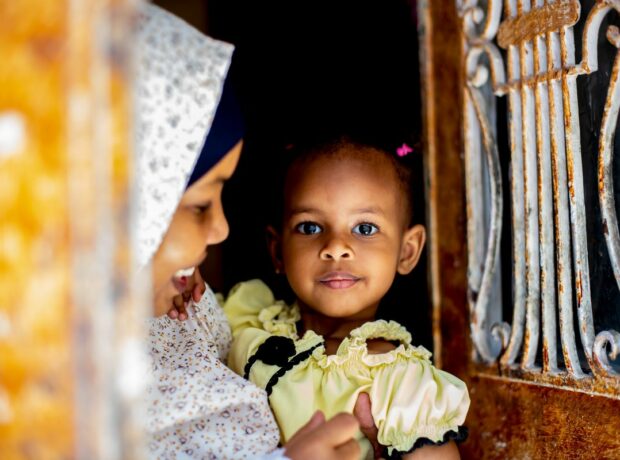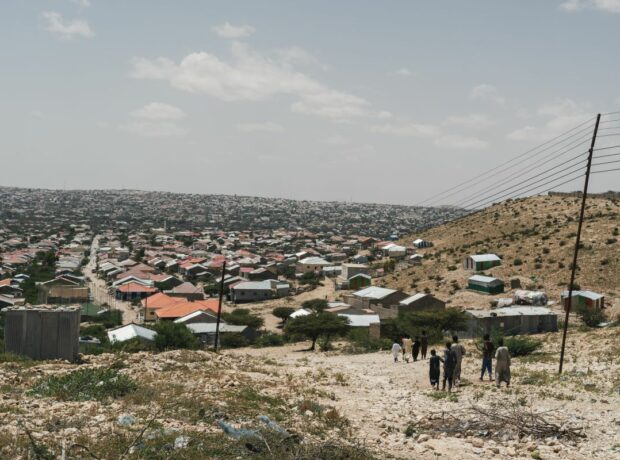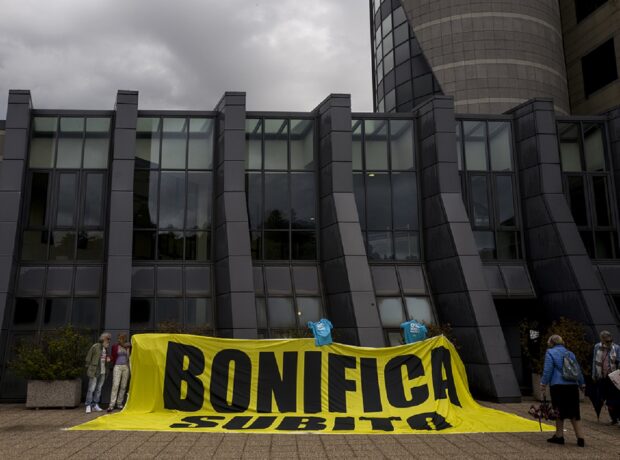In Rohingya refugee camps in Bangladesh, photojournalist Gabriele Cecconi was struck by both the human suffering and environmental degradation. Here he shares a photo essay revealing the toll, on both the people and the place, of forced mass migration to an area devoid of vital infrastructure.
In the summer of 2017, to escape persecution at home in Myanmar, hundreds of thousands of Rohingya people fled across the border to Bangladesh. Today, more than one million of them are living in makeshift camps in the coastal region of Cox’s Bazar. Their living conditions are precarious, and their futures, uncertain.
Over the last few years I’ve become especially interested in the relationship between people and the environment. It started when an earthquake hit the most beautiful part of my home region in Italy, Valnerina. When I went to document the aftermath I was so struck by the suffering and destruction, it felt like I was in the middle of a war. I felt completely lost and I was unable to take pictures for the first day. I had the same feeling when I first visited Kutupalong camp in Bangladesh.
In Valnerina, as in Kutupalong, the suffering and destruction is in sharp contrast with the beauty of the surrounding landscape: the mountains were still there, imposing and magnificent.
The crisis in Cox’s Bazar is an acute example of the challenges posed by mass migration, and how we influence and are influenced by our environment.
During my three visits to the camps in Bangladesh I saw a lot of change: new constructions, new arrivals, re-locations, etc. Sometimes shelters collapse and have to be rebuilt, and they are constantly needing to be upgraded to withstand the difficult climate and conditions. The camp and the people living there are in constant change.
When I first proposed this work, most of the magazines I contacted told me it was too complicated for them to talk about the environmental impacts of mass migration because readers might think we’re blaming the Rohingya people for damaging the land.
In the western world we tend to think that we as humans are separate from our environment. But the truth is we are part of it. And when we think in this way we can see that the suffering of human beings is the suffering of the environment, and vice versa.
That’s how I understand what is happening in southern Bangladesh. People are living in an already fragile ecosystem, housed in flimsy shelters and literally exposed to the forces of nature. At the same time they are living in survival mode, with 100% of the Rohingya people depending on deforestation for fuel, struggling to source clean water and living with no sustainable waste management system.
I want my work to show that after escaping violence and suffering in their own country, the Rohingya people now face a different kind of battle for survival. Both people and the environment are victims in this scenario and I’ve tried to respect the dignity of the people, photographing without sensationalising.
I wanted to capture the impact of a sudden, mass migration on a local environment, to observe the plight of people struggling to survive with scarce resources, and to document the impact of migration on a beleaguered ecosystem.
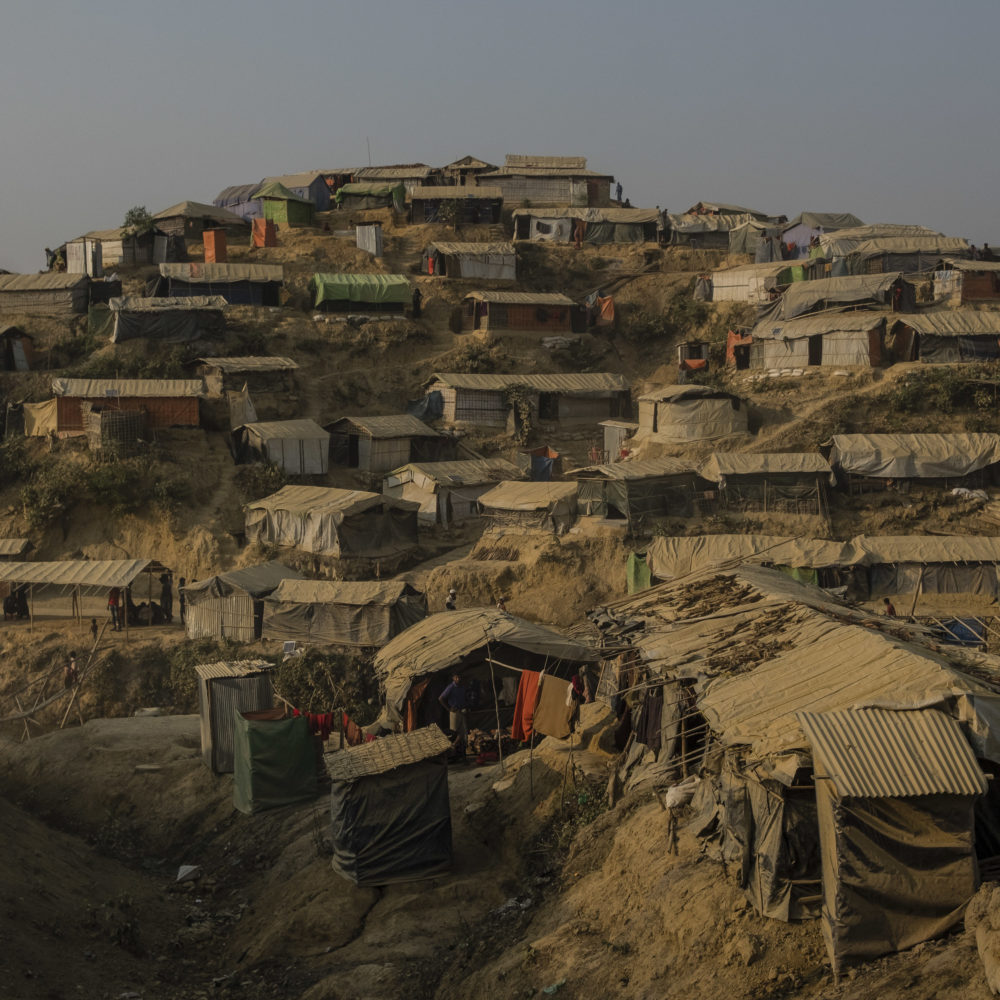
🡩 Thousands of hectares of forest have been cut down to make way for the Balukhali-Kutupalong “mega camp” in the Ukhia sub-district of Cox’s Bazar. In monsoon season roads turn to mud, and hills are susceptible to landslides, destroying shelters, flooding roads and smashing bridges.
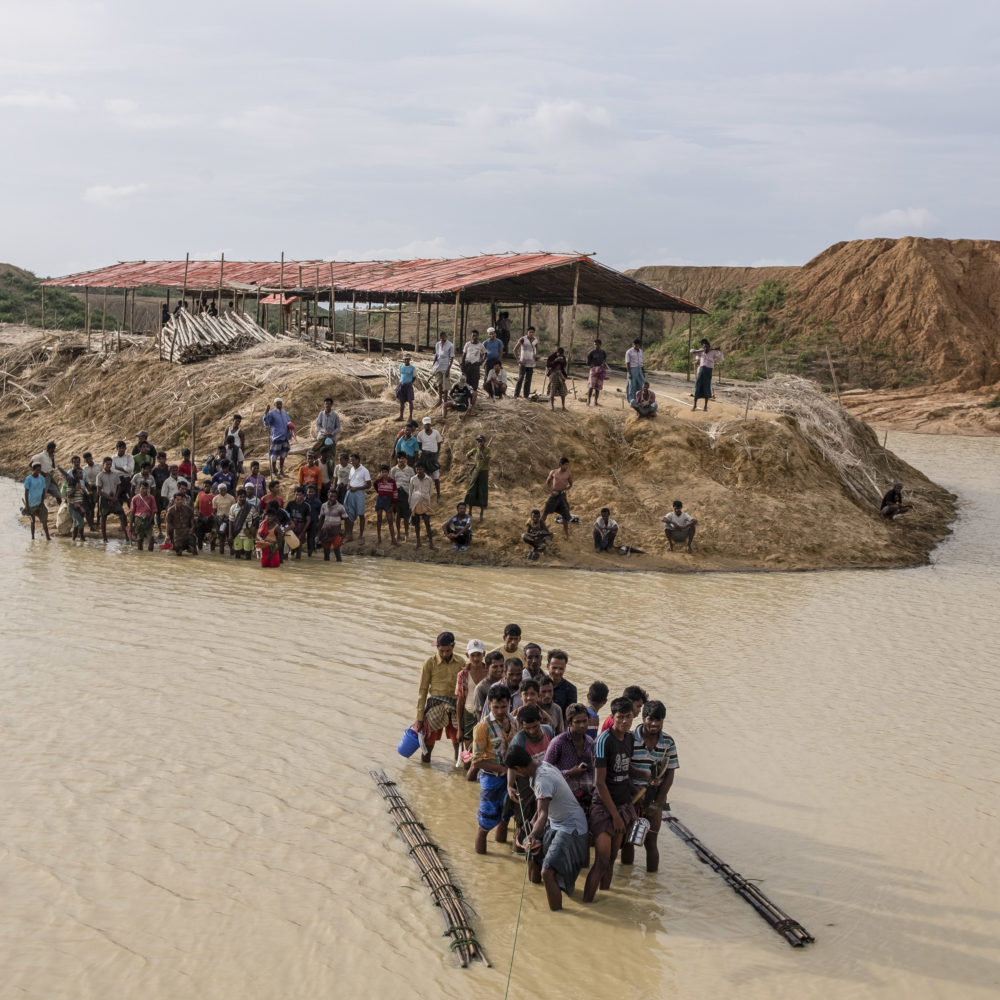
🡩 Widespread deforestation has had a devastating impact – causing soil erosion, and increasing the risk of landslides and flooding. Here, workers cross a flooded canal in the Balukhali–Kutupalong refugee camp.
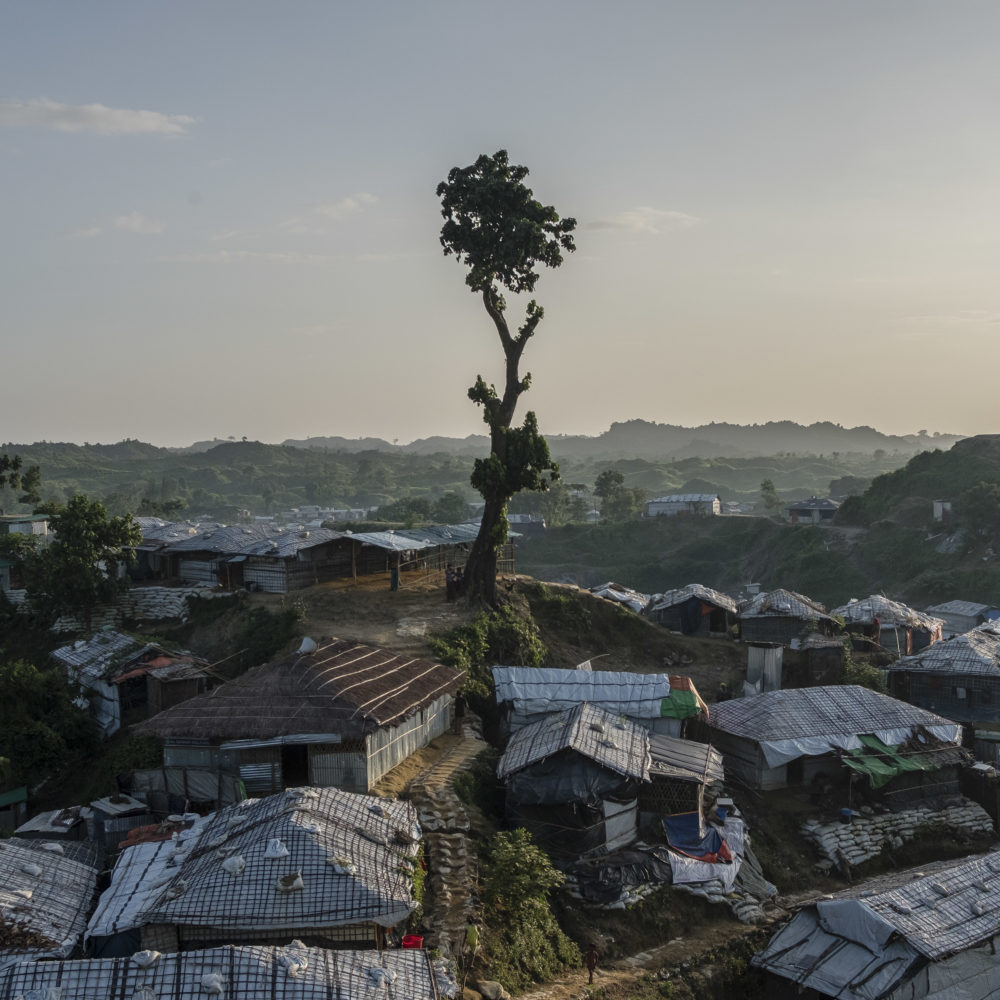
🡩 A tree stands alone in the middle of Unchiprang refugee camp in Tefnak sub-district. Against huge deforestation and exploitation of the environment, the energy and environmental technical group of the Inter Sector Coordination Group (ISCG) – which provides the primary humanitarian response to the Rohingya refugee crisis – has suggested that all forest in Cox’s Bazar could disappear this year.

🡩 Rohingya people from the Balukhali–Kutupalong refugee camp walk 15km into the forest at sunrise to collect firewood. More than 5,000 acres of forest was cut in just seven months last year, according to the Forest Department of Bangladesh.
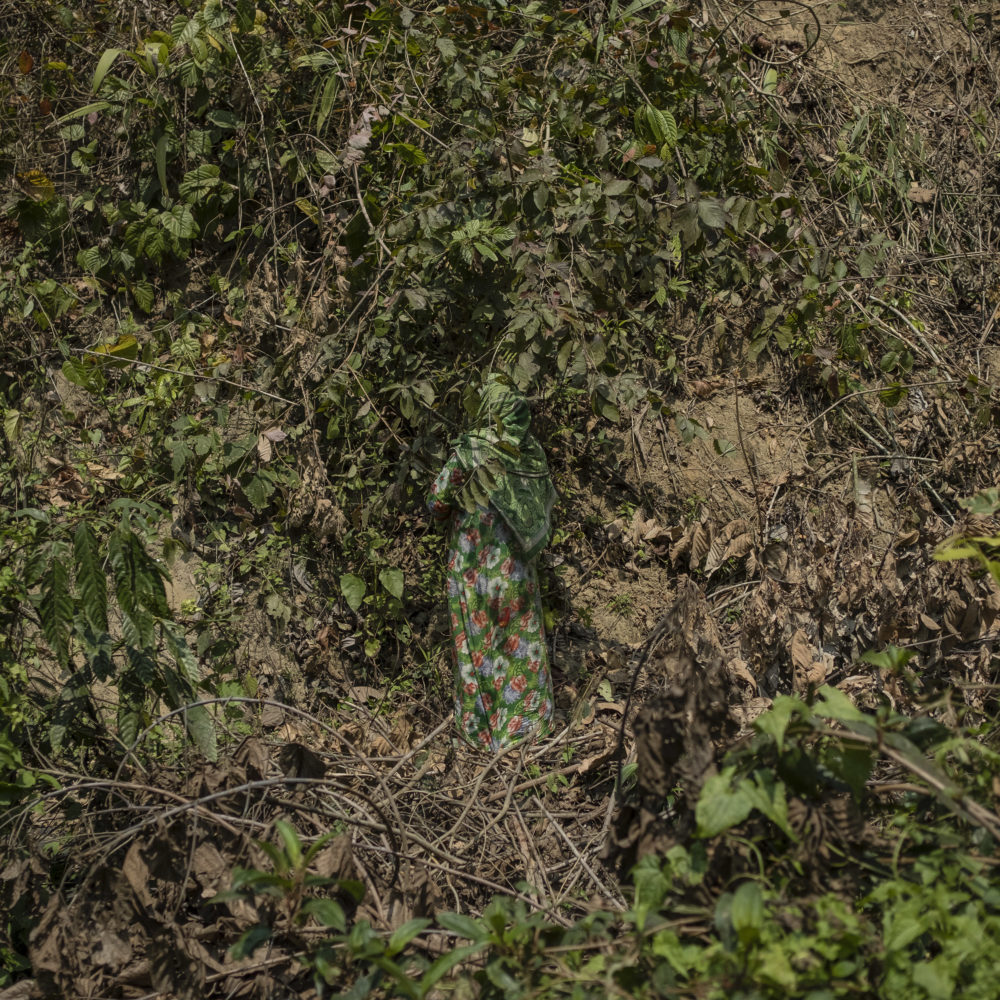
🡩 A Rohingya woman, camouflaged, collects leaves and roots inside the Teknaf Game Reserve. All the families here depend on the forest for survival, foraging roots and leaves to use as fuel and food. A UN report in September 2018 estimated that nearly 7,000 tonnes of wood fuel is collected every month.
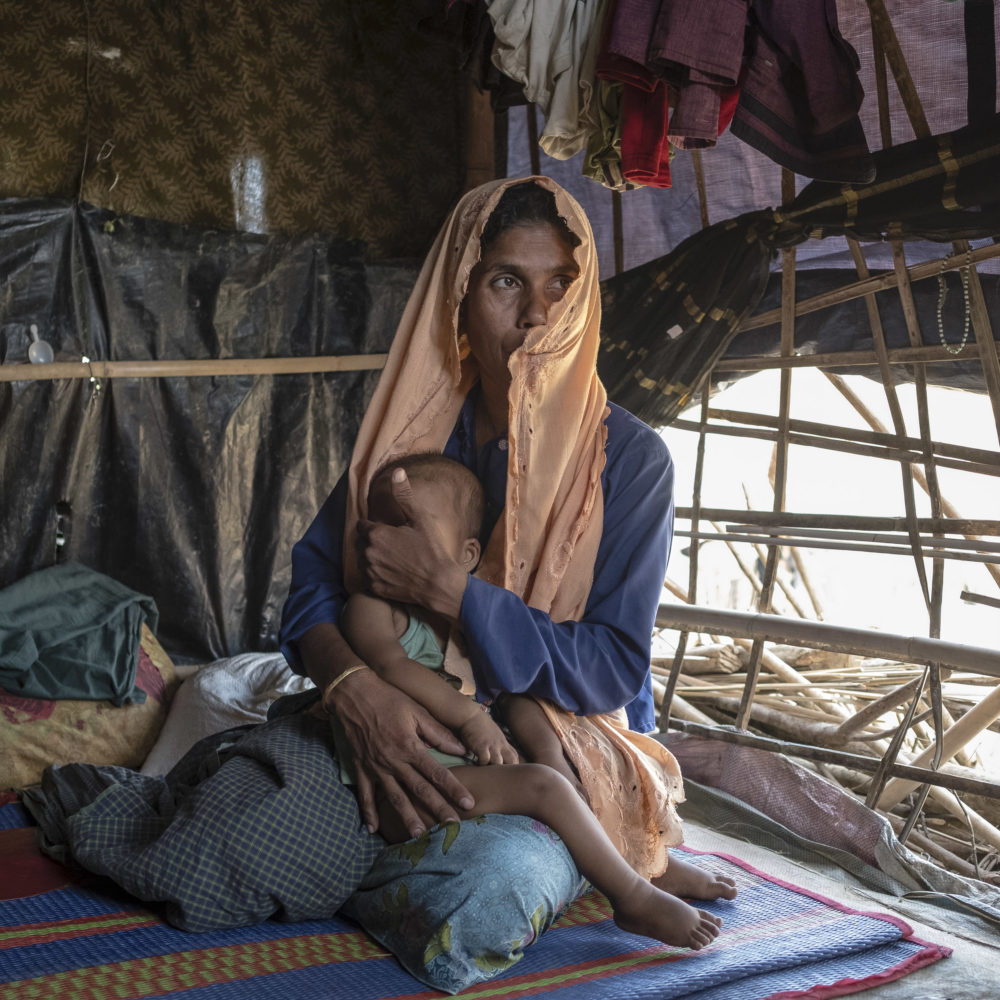
🡩 Having to cook food inside wooden shelters, using wood from the forest, can have incredibly harmful consequences. Both 35-year-old Marjon, and her two-year-old son, Muhammed, suffer from acute respiratory infections.
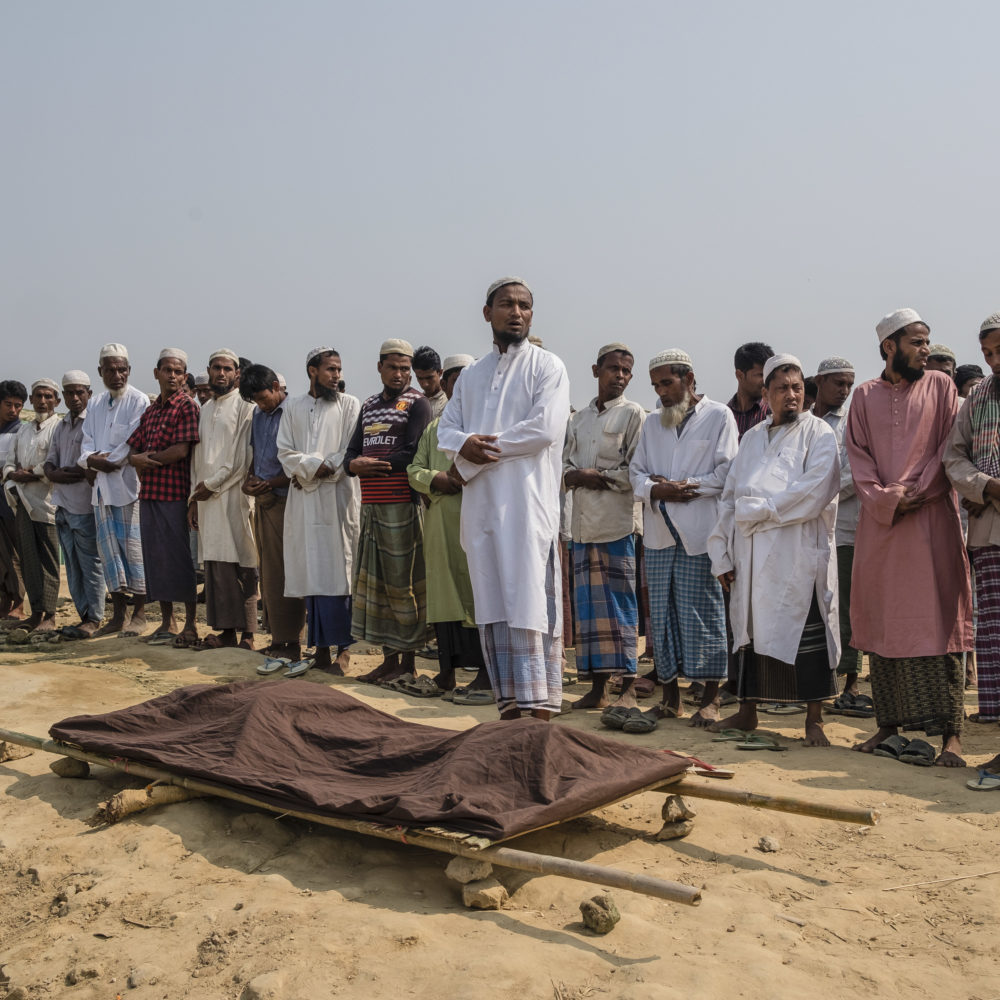
🡩 The consequences of burning wood fuel indoors can be fatal. Pictured is the funeral of Shak Karim, who died at 65 due to acute respiratory infections. Between August and December 2017 there were 273 reported deaths due to acute respiratory infections.
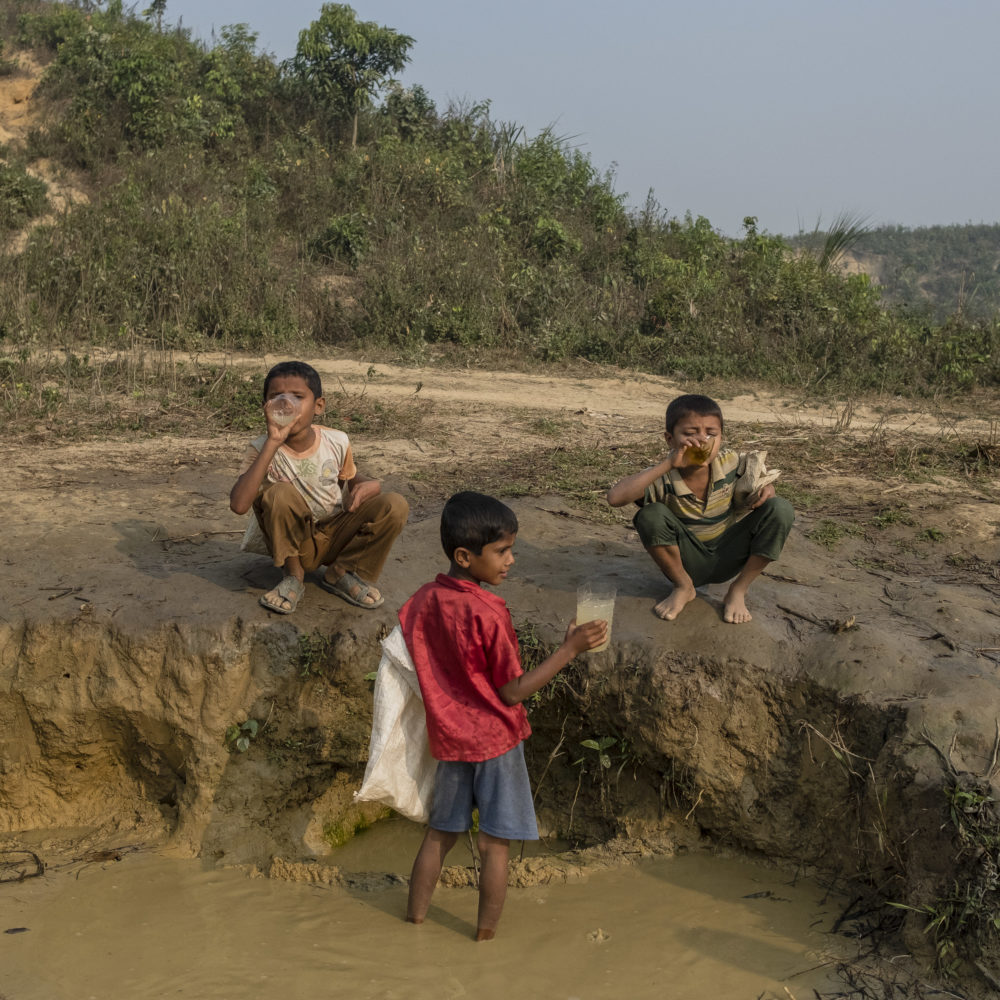
🡩 With no alternative, children regularly have to drink contaminated water in Balukhali–Kutupalong. Skin diseases and diarrhoea are common.In this environment, poor waste disposal systems, strained by a steady flow of new arrivals, can have serious effects on the quality and availability of water, exacerbating human suffering. The inability to dispose of waste is a major source of disease in the camps, with the World Health Organisation reporting in 2017 that 88% of water samples from the camps were infected by E. coli bacteria.
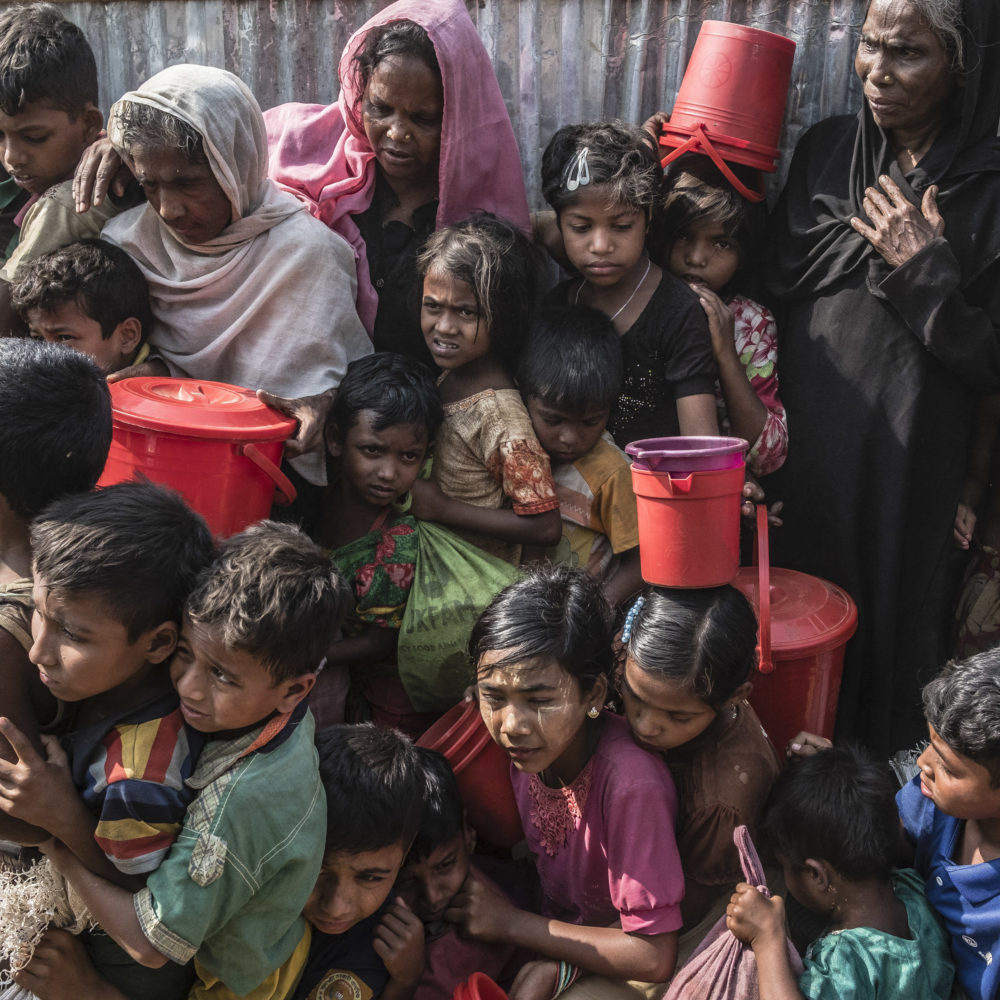
🡩 Like many camps, Moynarghona refugee camp is seriously overcrowded, and resources are scarce. Here, population density is so high there is on average 15 meters squared per person, and refugees regularly wait for hours for distributions of food and water.
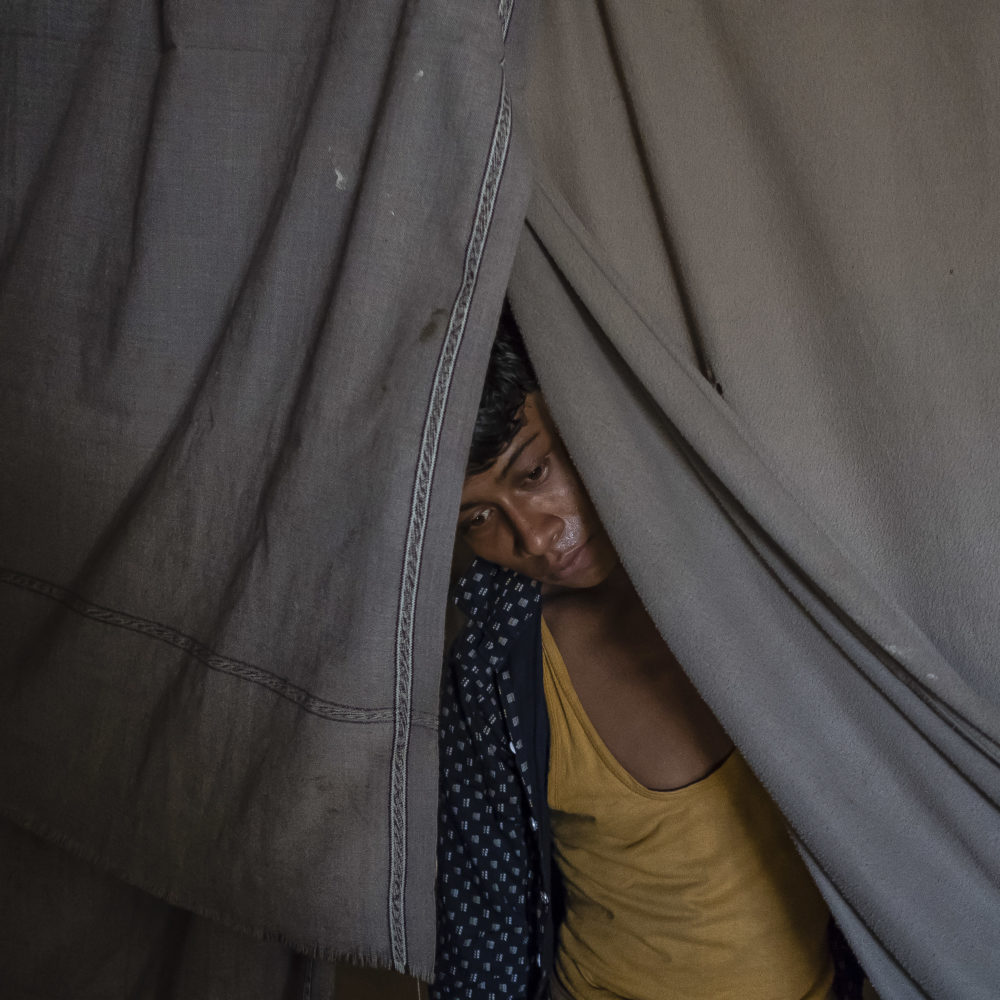
🡩 With such an influx of people, many camps are affected by soil erosion, causing landslides during monsoons. Mohammed Younus, 19, lives next to a hill in Balukhali-Kutupalong refugee camp and worries that the rain could cause a landslide on his family’s home.
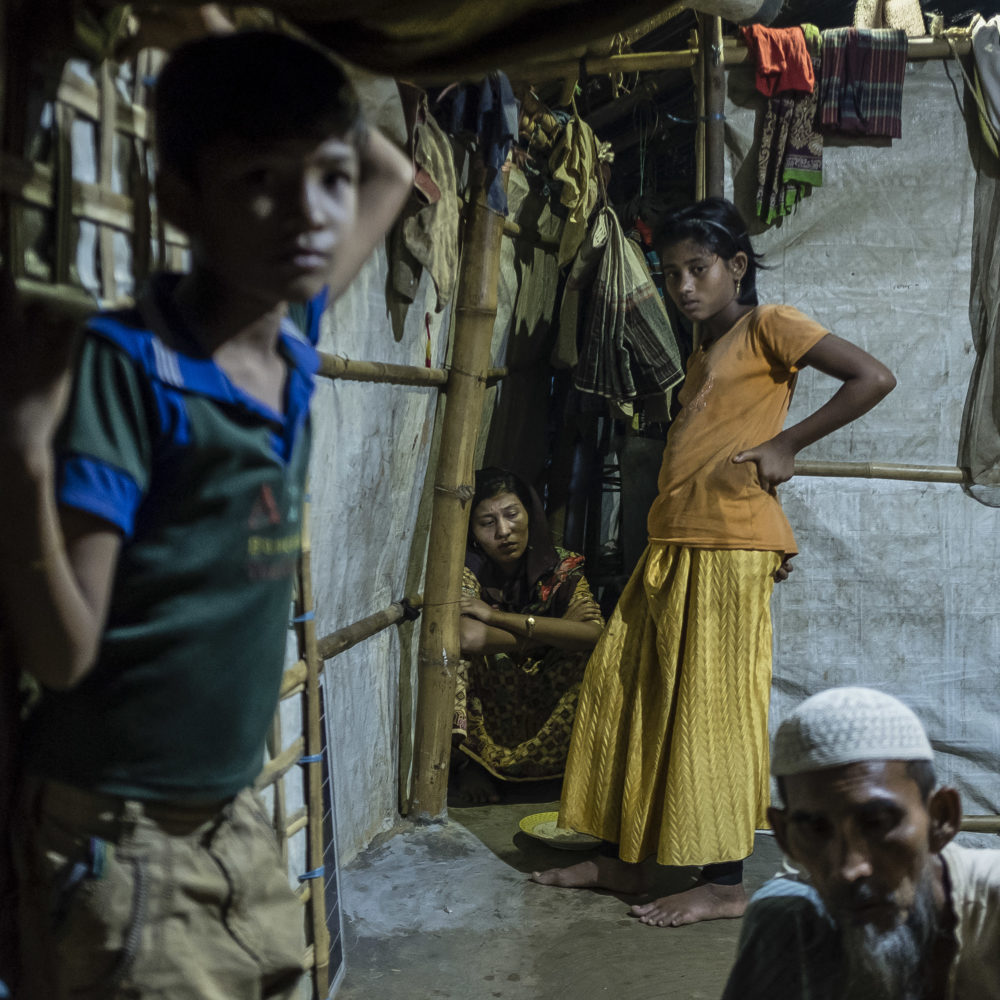
🡩 In some cases, families have to be moved to different locations in the camp because of the landslide risks. Dozens of shelters have had to be built to rehouse families dispossessed by landslides.
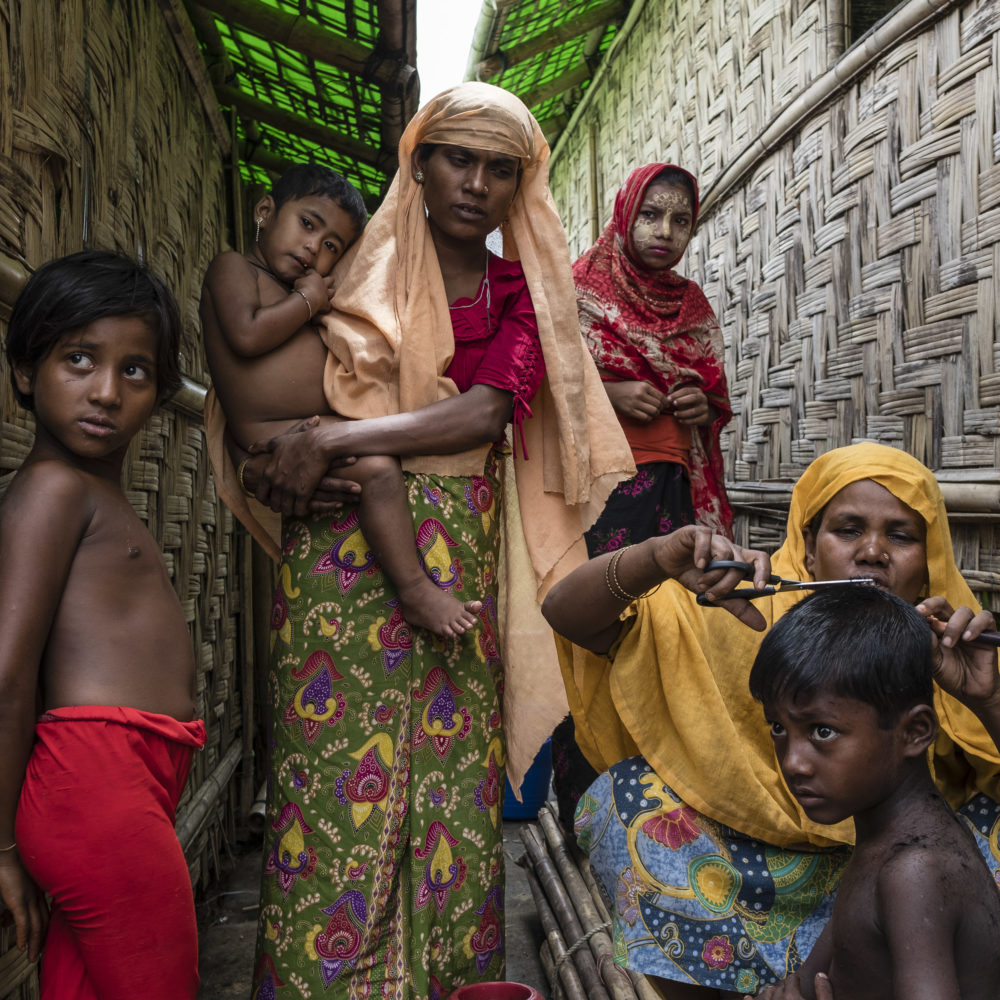
🡩 With no certainty about what the future holds, families carry on normal life as best they can in the makeshift camps.
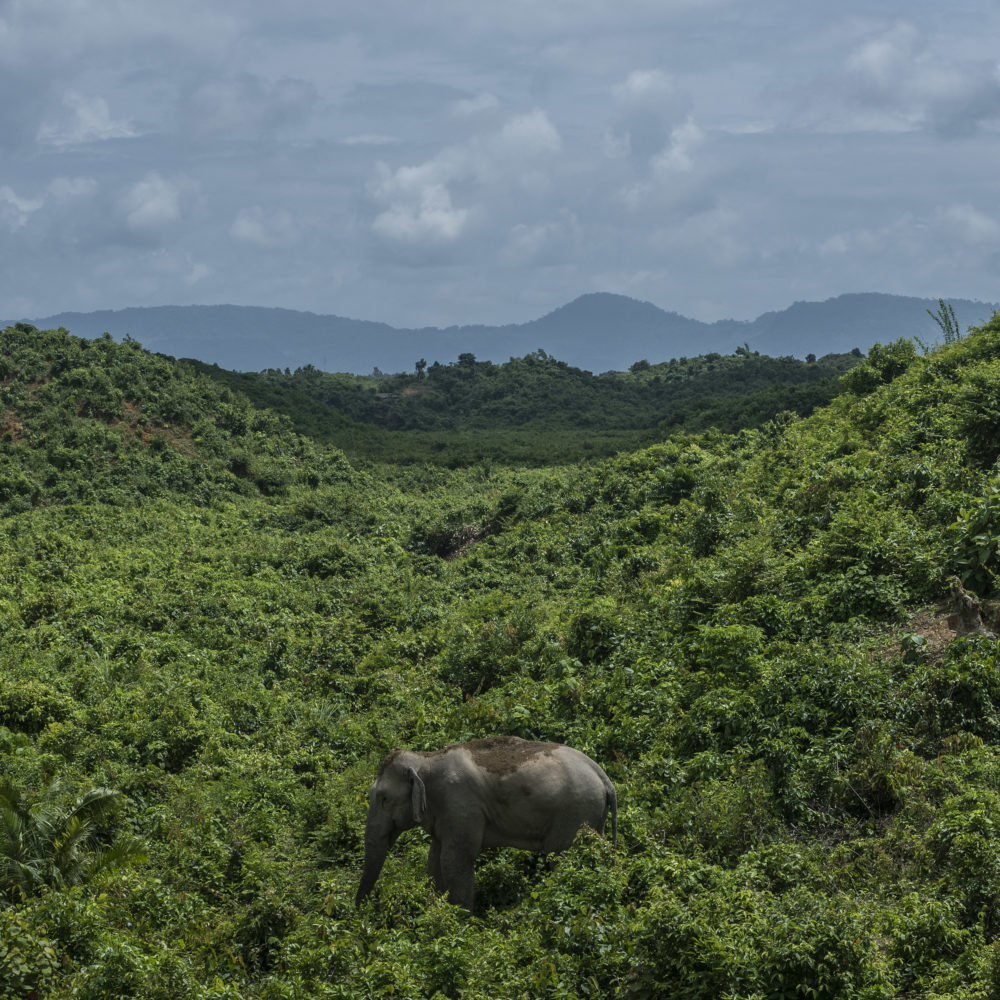
🡩 It’s not only humans who are affected. The mass migration has disrupted the habitats of animals, such as elephants, with potentially fatal consequences. The Balukhali–Kutupalong camp straddles the migration path of Asian elephants. During the first five months of the migration, some elephants got lost and panicked inside the camp, killing and injuring many Rohingya people.
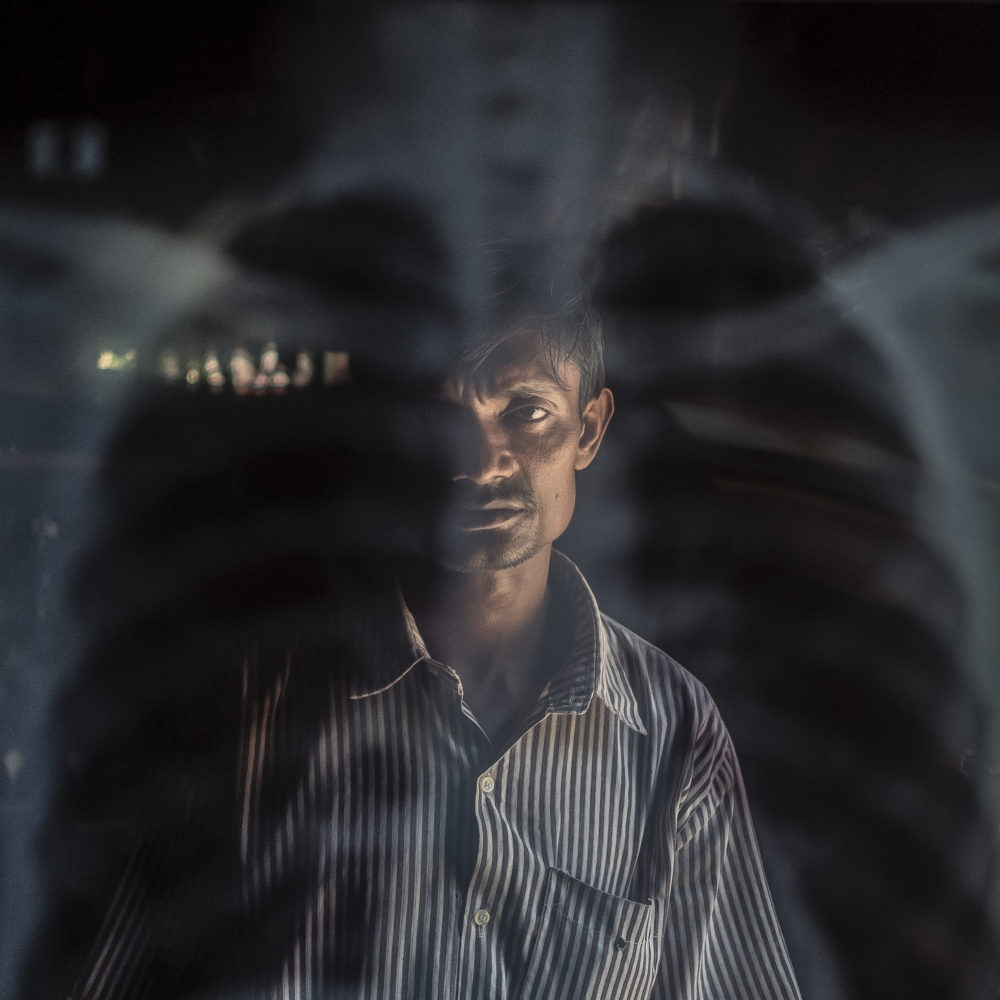
🡩 Noor, 30, was attacked by an elephant last year, receiving an injury to the chest. “I was walking on the main roads when I saw an elephant in front of me,” he said. “I started to run away but the elephant hit me. He got scared and angry, he was lost in the middle of the camp.”

🡩 Today, there are over 68 million refugees in the world – the highest number since the end of the Second World War. For Rohingya refugees in Bangladesh, there is no foreseeable end to their struggle. Perhaps seeking comfort in religion, Rohingya men and boys gather at the camp mosque, listening to their Iman.
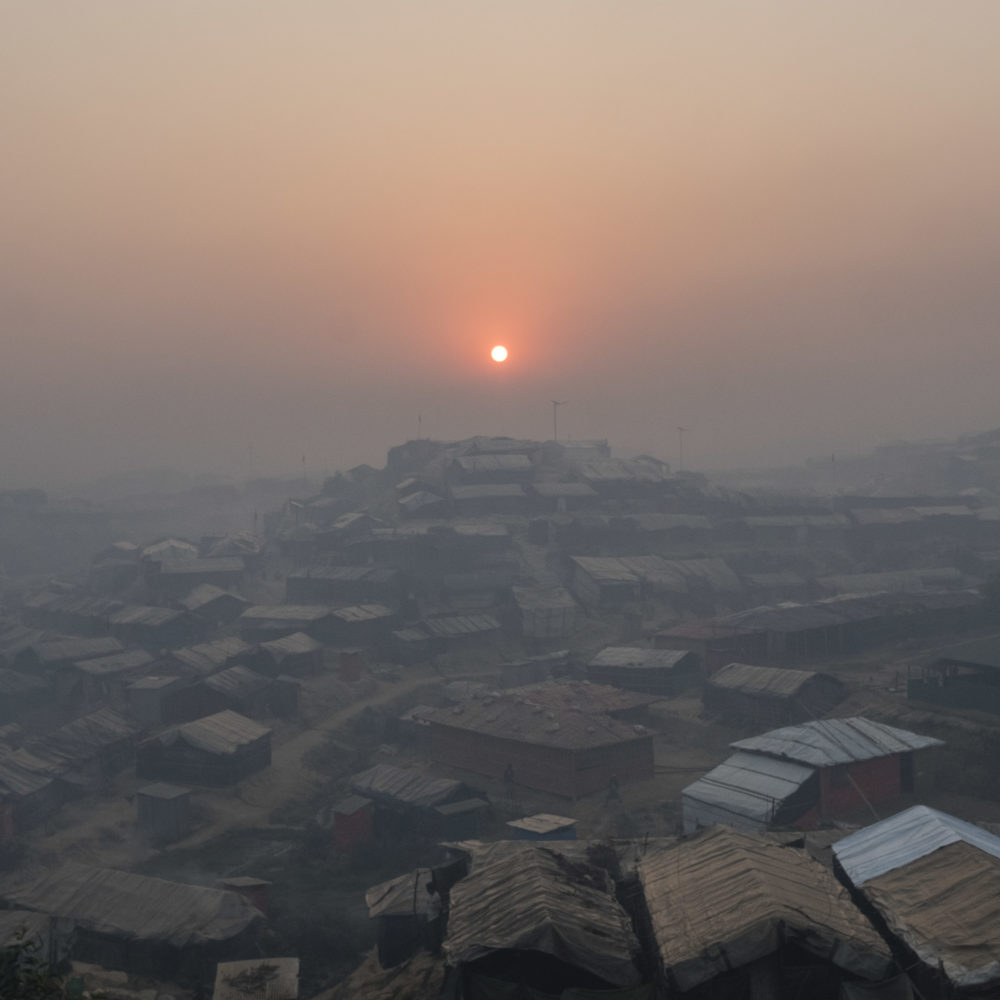
🡩 The sun rises over the makeshift homes of Balukhali–Kutupalong refugee camp, home to some 600,000 people. In this fragile region of Bangladesh, a country vulnerable to the effects of climate change, the environmental emergency unravelling in Cox’s Bazar is an acute reminder of the environmental challenge posed by mass migration, and of the human suffering it entails.
